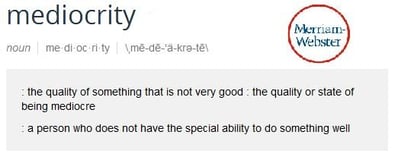Getting Your Remodeling Business Ready to Produce More Work
 Growth in consumer spending on remodeling during 2018, and beyond, is expected to skyrocket. This means that remodelers will have the opportunity to grow their businesses, and if done well; will make a lot of money. But is your business ready for the work? If you are already working too hard for too many hours will increasing volume just end up with you in divorce court and or on blood pressure medicine? Below I offer a vision, and some suggestions, for what you can do to be ready. If you already allowed yourself to get in too deep, then perhaps my suggestions can help you create a plan to get things running better than you had ever imagined.
Growth in consumer spending on remodeling during 2018, and beyond, is expected to skyrocket. This means that remodelers will have the opportunity to grow their businesses, and if done well; will make a lot of money. But is your business ready for the work? If you are already working too hard for too many hours will increasing volume just end up with you in divorce court and or on blood pressure medicine? Below I offer a vision, and some suggestions, for what you can do to be ready. If you already allowed yourself to get in too deep, then perhaps my suggestions can help you create a plan to get things running better than you had ever imagined.
It all starts with estimating.
Estimating might as well be the center of the universe for remodeling contractors. Using a defined process and key information, your production team can conquer that universe. If you grow your business without an advanced estimating system you risk dropping into a financial black hole. Your estimating should not only help provide a profitable selling price, it should also create, document, and organize the information your production team needs to build independently, without constantly bothering you or your salespeople. Done well, it should also help you predict your cash flow needs, and therefore your payment schedules. This way every job finances itself using your clients' money to pay bills on time, not yours. Successful estimating will also help your production team identify and schedule all the resources needed to complete the project weeks, or even months, before they are actually needed at the job site.
A real estimating system includes job costing.
First, an estimate is not  what you give to a prospective client. That is called a price. The estimate is really the contractor's best guess on what the project will cost their business to complete before overhead and profit are added. That's right, it’s just a guess. To continuously improve the accuracy of that guess, particularly as your business is exposed to new products and construction methods, or brings on new untested employees, job costing will be the only way to reduce the risks of estimating. Imagine going six months or a whole year before realizing you were using inaccurate information. Imagine the benefits of offering profit sharing if your team brings jobs in on budget. But, what if your budgets are never adequate and there are no profits to share, and when your employees ask why you can't tell them?
what you give to a prospective client. That is called a price. The estimate is really the contractor's best guess on what the project will cost their business to complete before overhead and profit are added. That's right, it’s just a guess. To continuously improve the accuracy of that guess, particularly as your business is exposed to new products and construction methods, or brings on new untested employees, job costing will be the only way to reduce the risks of estimating. Imagine going six months or a whole year before realizing you were using inaccurate information. Imagine the benefits of offering profit sharing if your team brings jobs in on budget. But, what if your budgets are never adequate and there are no profits to share, and when your employees ask why you can't tell them?
This all requires a well set up financial system.
 Even if you are a good estimator and you never miss any of the sticks and bricks, if you do not know which labor rate and markup to use you may be buying jobs instead of selling them. Without a well thought out list of estimating and matching time card work categories (sometimes referred to as phases), you will never know how well your team did compared to your estimated labor assumptions in specific areas. Also, without the right time card categories, how will you know and or confirm how many non-billable hours of pay you will need to add to, and cover, inside the burden labor rate you assume and charge for their billable hours?
Even if you are a good estimator and you never miss any of the sticks and bricks, if you do not know which labor rate and markup to use you may be buying jobs instead of selling them. Without a well thought out list of estimating and matching time card work categories (sometimes referred to as phases), you will never know how well your team did compared to your estimated labor assumptions in specific areas. Also, without the right time card categories, how will you know and or confirm how many non-billable hours of pay you will need to add to, and cover, inside the burden labor rate you assume and charge for their billable hours?
There are plenty of things to work on as you grow a remodeling business. However, if you don't get the estimating of your jobs right growing your business will just help you lose money faster.


 Most contractors can't explain how they do business, they just make things happen. In a smaller remodeling business, say up to about $5-700K of installed work, this may get you by. But as you grow your business, particularly if you want to
Most contractors can't explain how they do business, they just make things happen. In a smaller remodeling business, say up to about $5-700K of installed work, this may get you by. But as you grow your business, particularly if you want to  Be careful here. If you don't explain how you do business before winning the bid on an architect driven remodeling project you might just be told how you will do business. Examples include how and when you will be paid, what will be considered a change order vs. what you should have assumed to be included, what margin you can earn on change orders, and what hoops you will need to jump through before receiving progress payments and final payments. Be sure to carefully read any AIA Contracts before signing them.
Be careful here. If you don't explain how you do business before winning the bid on an architect driven remodeling project you might just be told how you will do business. Examples include how and when you will be paid, what will be considered a change order vs. what you should have assumed to be included, what margin you can earn on change orders, and what hoops you will need to jump through before receiving progress payments and final payments. Be sure to carefully read any AIA Contracts before signing them. One of the very important things that hands-on contractors who seek to become construction business owners need to get ready for is bringing on sales staff to help the owner sell an adequate volume of work as the business grows. Below is a 10 item checklist contractors can use to help them get ready for this critical step in the growth of their businesses. From my own experience of hiring my first remodeling salesperson many years ago number 10 is the most important.
One of the very important things that hands-on contractors who seek to become construction business owners need to get ready for is bringing on sales staff to help the owner sell an adequate volume of work as the business grows. Below is a 10 item checklist contractors can use to help them get ready for this critical step in the growth of their businesses. From my own experience of hiring my first remodeling salesperson many years ago number 10 is the most important. Establish Sales Goals and a Performance Based Compensation Strategy you can share with candidates as you interview them and your business will use once they are hired.
Establish Sales Goals and a Performance Based Compensation Strategy you can share with candidates as you interview them and your business will use once they are hired. As you grow your business day to day management and leadership considerations can quickly creep up on construction business owners. Profitably growing a remodeling business to any volume, but in particular growing past the $1M threshold in produced work, definitely requires advanced business skills. Growing and running your business by the seat of your pants is a sure way to create a mediocre business that will never generate maximum profits. This article offers several ways business owners can determine if they and their businesses are headed for mediocrity. It also offers options to help you and your business get back on track.
As you grow your business day to day management and leadership considerations can quickly creep up on construction business owners. Profitably growing a remodeling business to any volume, but in particular growing past the $1M threshold in produced work, definitely requires advanced business skills. Growing and running your business by the seat of your pants is a sure way to create a mediocre business that will never generate maximum profits. This article offers several ways business owners can determine if they and their businesses are headed for mediocrity. It also offers options to help you and your business get back on track.
 The first is to let them keep happening. If you allow things to continue you will likely lose customers, compromise your brand, have high employee turnover and you will never fully achieve creating a successful and profitable business. Eventually, when your family and others ask you why you never really succeeded in business, you will again have to resort to rationalizing why it was someone else's fault.
The first is to let them keep happening. If you allow things to continue you will likely lose customers, compromise your brand, have high employee turnover and you will never fully achieve creating a successful and profitable business. Eventually, when your family and others ask you why you never really succeeded in business, you will again have to resort to rationalizing why it was someone else's fault. If your goal is to grow your remodeling business past the $1Million installed sales volume threshold the business will need a design and or specification process. That process must support the ability to perform a "handoff" between the salesperson and the production team that will build sold projects. Without adequate plans and specifications the production team and a project's lead carpenter will be constantly contacting the salesperson for the information needed to build what the customer is expecting.
If your goal is to grow your remodeling business past the $1Million installed sales volume threshold the business will need a design and or specification process. That process must support the ability to perform a "handoff" between the salesperson and the production team that will build sold projects. Without adequate plans and specifications the production team and a project's lead carpenter will be constantly contacting the salesperson for the information needed to build what the customer is expecting. Be honest not only to your customers, but also with yourself. I fortunately recognized very early in the building of my business that I was not a designer. I can build any design you give me, I just don't have the right talents to design renovations at the level my target customer expected and deserved. So, if you do offer or plan to offer design services make sure you find the right talent to do so. That person
Be honest not only to your customers, but also with yourself. I fortunately recognized very early in the building of my business that I was not a designer. I can build any design you give me, I just don't have the right talents to design renovations at the level my target customer expected and deserved. So, if you do offer or plan to offer design services make sure you find the right talent to do so. That person  First, make sure you can legally offer design service where your business operates. Next, make sure you and or your employees have the right construction, product and building science knowledge and experience to offer design and or specification assistance. Value engineering for a prospect may help you sell a project, but what if you suggest or substitute products that compromise the design, the structure and or the purpose of the project? You may own the end result and it could cost you a lot of money.
First, make sure you can legally offer design service where your business operates. Next, make sure you and or your employees have the right construction, product and building science knowledge and experience to offer design and or specification assistance. Value engineering for a prospect may help you sell a project, but what if you suggest or substitute products that compromise the design, the structure and or the purpose of the project? You may own the end result and it could cost you a lot of money.  This may seem like an obvious point but here me out. If your goal is to bust past $1Million your plans and specifications should include not just what might be needed to sell the job and or get a permit. Your plans and specs should really be communication tools that your production team will use to build from. Measurements, product sizes, rough opening dimensions, center lines and clearances all become critical when building, and even more critical if you want to protect your margins and project schedules. With the right plans and specifications you can protect your profits and only have to build the project once.
This may seem like an obvious point but here me out. If your goal is to bust past $1Million your plans and specifications should include not just what might be needed to sell the job and or get a permit. Your plans and specs should really be communication tools that your production team will use to build from. Measurements, product sizes, rough opening dimensions, center lines and clearances all become critical when building, and even more critical if you want to protect your margins and project schedules. With the right plans and specifications you can protect your profits and only have to build the project once. As produced volume increase for a remodeler, that remodeler must decide between being a contractor and a construction business owner. As a contractor you can do all of the above yourself, but breaking $1Million will be challenging, require lots of work hours and may not be practical depending on your target project types. As a construction business owner your role will be to profitably run the business not the jobsite. If that is your goal make sure your team members will be creating the information each department needs to successfully sell profitable projects and perform their assigned responsibilities.
As produced volume increase for a remodeler, that remodeler must decide between being a contractor and a construction business owner. As a contractor you can do all of the above yourself, but breaking $1Million will be challenging, require lots of work hours and may not be practical depending on your target project types. As a construction business owner your role will be to profitably run the business not the jobsite. If that is your goal make sure your team members will be creating the information each department needs to successfully sell profitable projects and perform their assigned responsibilities.
 Well before attempting to break past $Million in installed sales remodelers and home improvement contractors should already have an established and tested sales system in place. The system should be well defined. Those involved with selling, as well as supporting the sales department at your business, must be trained and held accountable to using it correctly and consistently.
Well before attempting to break past $Million in installed sales remodelers and home improvement contractors should already have an established and tested sales system in place. The system should be well defined. Those involved with selling, as well as supporting the sales department at your business, must be trained and held accountable to using it correctly and consistently.  Decide what Sales System you will use
Decide what Sales System you will use I want to stress that consistency of and with your company's sales approach will be really important as the business grows. Without consistency it will be difficult for the owner to become a sales manager, or transfer sales management to someone else, because each sales person may approach selling in a different way. And, without consistency of sales approach, repeat customers and their referrals may not experience what they expected when a new salesperson visits them. Plus, by having a consistent sales approach that successfully helps prospects buy the right solution, you can market the advantages of that sales system with confidence prospects will experience what they expect if they respond you your marketing.
I want to stress that consistency of and with your company's sales approach will be really important as the business grows. Without consistency it will be difficult for the owner to become a sales manager, or transfer sales management to someone else, because each sales person may approach selling in a different way. And, without consistency of sales approach, repeat customers and their referrals may not experience what they expected when a new salesperson visits them. Plus, by having a consistent sales approach that successfully helps prospects buy the right solution, you can market the advantages of that sales system with confidence prospects will experience what they expect if they respond you your marketing. Most remodelers, but certainly not all, rely heavily on referrals and repeat customers as they grow their businesses. This may keep a contractor doing a low volume of work busy, but relying so exclusively on referrals won't be adequate if you want to become a construction business owner, break the $1Million installed sales threshold and develop a constantly growing business.
Most remodelers, but certainly not all, rely heavily on referrals and repeat customers as they grow their businesses. This may keep a contractor doing a low volume of work busy, but relying so exclusively on referrals won't be adequate if you want to become a construction business owner, break the $1Million installed sales threshold and develop a constantly growing business. There are many customer types out there all with their own expectations when it comes to working with a remodeler. Successful remodeling businesses are those that strategically decide who they will be and who they will serve. If you choose to work for people who buy on price and expect more than they are willing to pay for, you will get more work from them. And because people tend to hang out with other people just like them, your past customers will refer you to more customers just like them. Before you do marketing to grow your business decide and define who you want as your customer. Also, think about the project types that make sense for the business you want to develop and grow. For example pull and replace kitchens and bathrooms may not be sexy or all that challenging to you, but remember you are building a company and a team of employees to complete what your company decides to sell. If you decide to build complicated and or highly detailed projects you will need the appropriate systems and staff to estimate, sell and produce that level of project to the expectations of your targeted client type. Choose wisely.
There are many customer types out there all with their own expectations when it comes to working with a remodeler. Successful remodeling businesses are those that strategically decide who they will be and who they will serve. If you choose to work for people who buy on price and expect more than they are willing to pay for, you will get more work from them. And because people tend to hang out with other people just like them, your past customers will refer you to more customers just like them. Before you do marketing to grow your business decide and define who you want as your customer. Also, think about the project types that make sense for the business you want to develop and grow. For example pull and replace kitchens and bathrooms may not be sexy or all that challenging to you, but remember you are building a company and a team of employees to complete what your company decides to sell. If you decide to build complicated and or highly detailed projects you will need the appropriate systems and staff to estimate, sell and produce that level of project to the expectations of your targeted client type. Choose wisely. Your marketing should serve two very important purposes. The first is to help your target customer type(s) find you. The second is to convert leads into sales. The marketing tactics you use should support these two goals. One marketing tactic that can be really effective at accomplishing both could be your company web site. For example, done well, SEO can be used so prospects searching online for certain services and contractor types can find your business, and find it on the first page of search engine results. Goal #1 achieved. But once you get them to your site you also need to differentiate your business from other businesses in the marketplace
Your marketing should serve two very important purposes. The first is to help your target customer type(s) find you. The second is to convert leads into sales. The marketing tactics you use should support these two goals. One marketing tactic that can be really effective at accomplishing both could be your company web site. For example, done well, SEO can be used so prospects searching online for certain services and contractor types can find your business, and find it on the first page of search engine results. Goal #1 achieved. But once you get them to your site you also need to differentiate your business from other businesses in the marketplace  Growing a remodeling business past $1Million a year of installed sales comes with new costs and expenses as the number of employees and overhead related activities naturally increase. Just like estimating the cost of a remodeling project, the business owner will need a practical plan for growing the business and an accurate estimate of the costs related to growing it. Then just like a remodeling project the business needs a way to measure how well things are actually going against the plan and budget.
Growing a remodeling business past $1Million a year of installed sales comes with new costs and expenses as the number of employees and overhead related activities naturally increase. Just like estimating the cost of a remodeling project, the business owner will need a practical plan for growing the business and an accurate estimate of the costs related to growing it. Then just like a remodeling project the business needs a way to measure how well things are actually going against the plan and budget.  As the business grows and more employees are added to share the workload the owner must be able to delegate tasks he or she probably did them self as they grew the business. These delegated activities might include things like product selection, product procurement, production management, and even the responsibility for doing the estimating.
As the business grows and more employees are added to share the workload the owner must be able to delegate tasks he or she probably did them self as they grew the business. These delegated activities might include things like product selection, product procurement, production management, and even the responsibility for doing the estimating.  Without an accurate financial system in place your business will, unfortunately, be like the majority of other remodeling businesses in our industry. Over 80% of remodelers have no idea of the true cost of being in business. These businesses use what is referred to as the WAG method, or "Wild Ass Guess Method” for estimating direct cost and even the markup percentage to use on estimated costs when pricing the jobs they sell. If that describes you and your business put the things I describe here in this article in place at your business before you seek to take-off past $1Million in remodeling. Growing your business should be rewarding and profitable. Entering the unknown without being properly prepared can be costly and may even lead to the demise of your remodeling business.
Without an accurate financial system in place your business will, unfortunately, be like the majority of other remodeling businesses in our industry. Over 80% of remodelers have no idea of the true cost of being in business. These businesses use what is referred to as the WAG method, or "Wild Ass Guess Method” for estimating direct cost and even the markup percentage to use on estimated costs when pricing the jobs they sell. If that describes you and your business put the things I describe here in this article in place at your business before you seek to take-off past $1Million in remodeling. Growing your business should be rewarding and profitable. Entering the unknown without being properly prepared can be costly and may even lead to the demise of your remodeling business. Newton’s Law of Momentum states that “A body in motion tends to stay in motion and tends to continue in the same direction.” Remodelers who downsized their businesses during the recession might want to consider Newton’s law.
Newton’s Law of Momentum states that “A body in motion tends to stay in motion and tends to continue in the same direction.” Remodelers who downsized their businesses during the recession might want to consider Newton’s law.  If you have convinced yourself that your business isn’t really all that bad when you compare it to other dysfunctional businesses that are worse off than yours, yours will never achieve true success. Being less bad is not good. Rather than judge your business on relative success, you should judge it based on absolute success. Again this requires planning, but also requires establishing metrics against which you, and anyone else who reads your plan, can measure whether your plan is working and is actually leading you towards predefined success. Keep in mind that being better off than you used to be might not be a great place to be either. Think of it this way;
If you have convinced yourself that your business isn’t really all that bad when you compare it to other dysfunctional businesses that are worse off than yours, yours will never achieve true success. Being less bad is not good. Rather than judge your business on relative success, you should judge it based on absolute success. Again this requires planning, but also requires establishing metrics against which you, and anyone else who reads your plan, can measure whether your plan is working and is actually leading you towards predefined success. Keep in mind that being better off than you used to be might not be a great place to be either. Think of it this way; There are many remodeling business myths that seem to have become truths for way too many remodelers. That’s too bad. Believing those myths may be holding them back from being able to grow their businesses. Allowing these myths to remain in place will definitely prevent remodelers from successfully growing their businesses past the $1 Million installed sales threshold.
There are many remodeling business myths that seem to have become truths for way too many remodelers. That’s too bad. Believing those myths may be holding them back from being able to grow their businesses. Allowing these myths to remain in place will definitely prevent remodelers from successfully growing their businesses past the $1 Million installed sales threshold. Again, will you jump off the bridge, too? Will Delta Airlines let you pay after you land? Completing remodeling services without being paid for them before you do them is in my opinion foolish, and a huge risk for most remodelers. It instantly creates cash flow challenges in a business where cash is king. Breaking $1M without good cash flow might be the death of your business. Here is how you can create payment schedules that keep you ahead of your customer:
Again, will you jump off the bridge, too? Will Delta Airlines let you pay after you land? Completing remodeling services without being paid for them before you do them is in my opinion foolish, and a huge risk for most remodelers. It instantly creates cash flow challenges in a business where cash is king. Breaking $1M without good cash flow might be the death of your business. Here is how you can create payment schedules that keep you ahead of your customer: 





